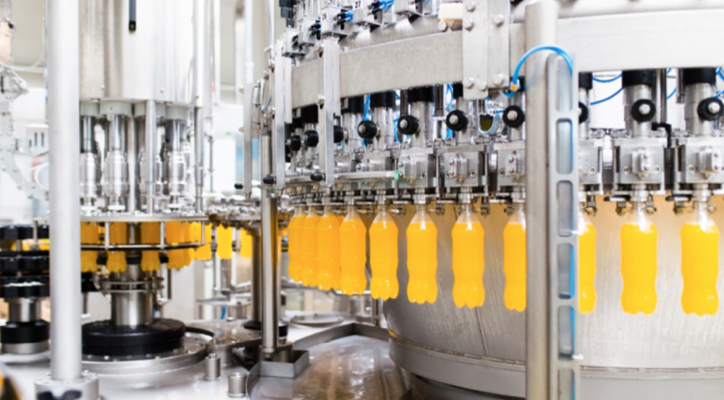Less is more when it comes to machine safety
Rich Gibson
Product Marketing
ABB Jokab Safety Products
Most machine builders have been going the wrong way on safety, adding more protective devices in their effort to reduce risks. Turns out that the right approach is to actually use fewer devices. Read how less is more when it comes to machine safety and keeping things simpler actually makes machines safer.
Increase control system safety by keeping them simple
Rock climbing is a risky sport, made considerably less so thanks to safety devices including ropes, nylon webbing runners, pitons screwed into cracks in the rocks, and carabiners to connect them all together. A cardinal rule when setting up the fall-protection system for a climb is to use as few pieces of hardware as possible. Climbers know that each device adds another potential point of failure and unneeded complexity. For safe climbing, less is more.
The designers of electrical safety systems have come to the same realization: simplicity enhances safety and reliability. Designing these simpler, safer systems isn’t proceeding as quickly as it could because old ways die hard. But OEMs and system owners are increasingly recognizing how newer technology not only boosts simplicity and safety, but also lowers safety-system costs.
This less-is-more philosophy of protection circuits is apparent in ISO 13849. It lays out safety-related design principles for control systems that focus, in part, on the philosophy of increasing the safety performance level by reducing points of failure.
Traditional protection systems
The techniques used today to guard operators from machine dangers are largely unchanged from four decades ago. Doors and guards armed with interlock switches remain the most widely used methods to protect operators. Adding more protection typically involves adding more switches.
“As anyone who’s done troubleshooting on a safety circuit like this knows, a short in any of the wiring or devices creates a single-channel fault,” says Rich Gibson, ABB Jokab Safety Product Marketing Manager. “Chasing down the fault means opening and closing doors, tugging on connections, and visibly inspecting cabling. It’s easy to see how more devices reduce reliability and increase maintenance.”
But it’s also easy to understand why that approach was used. Transients in those 110VAC systems often micro-weld the safety-switch contacts together. This created a maintenance issue and, far more seriously, danger for operators. The switches had to be powerful enough to actually break apart the welded contacts. Today’s digital devices operate on milliamps, with no chance of contacts welding. That old technology simply doesn’t make sense today.
The benefits of simplicity
Today’s simpler and safer circuits rely far less on contact-based devices and far more on transistor- based, output-signal switching devices (OSSDs). Now we can wire multiple devices into a single pair of inputs on a single safety controller. That greatly simplifies wiring and lowers the device count.
Use of this kind of OSSDs enables equipment builders to simplify their designs, reduce the wiring, shrink panel or equipment size … and almost always to do so at a lower cost than using traditional technology. Many of those same benefits flow down to the equipment owner and the techs charged with keeping the equipment running.
“When I was working in manufacturing, we did an investigation into safety relays returned as defective,” recalls Gibson. “The customer typically said that one of the channels failed on the relay and they were locked up. We tested each of those returned relays. In 88% of them, the relay tested fine. That told us it wasn’t the device that created the problem but rather some defect or short in the wiring of their safety circuit. Today’s technology very nearly eliminates those short circuits in the field from being over-ridden.”
With technology available today, troubleshooting can often be done by the operator. It’s as simple as scanning the status LEDs on the devices to find the point of fault. Downtime and maintenance are reduced.
Rethinking your safety philosophy
Too many OEMs and their customers think of safety-system standards as a hurdle they need to clear, but only by as little as possible. Doing only the minimum required to meet the standard reduces the immediate equipment costs. But that’s shortsighted thinking.
Most parents would be far from satisfied if their child presented them with a report card of all Ds. It’s true that the student met the required standard for passing and did so, no doubt, by making the minimum investment of time and effort. But that’s a low performance bar.
“The people responsible for providing and implementing safety systems should want something beyond meeting the lowest required standard,” Gibson emphasizes. “Setting their aim higher reduces not only risks to employees, but also the risk of costly, future upgrades. It would be difficult to recall an instance when a safety standard was lowered; the opposite is far more likely to occur. When that happens, users are compelled to upgrade or retrofit their systems to bring them into compliance. The cost of those upgrades will more than likely offset the savings on their original investment.”
And of course, ignorance of those required upgrades is no excuse for not implementing them. If there’s an injury involving a piece of equipment that’s not up to the current standard, expect to be hit with fines.
Shifting toward simplicity
One strong example of how new technology is supporting the shift to simpler, safer systems is the ABB Eden Sensor, a non-contact Category 4 safety sensor for interlocked doors and safe-position sensing. Up to 30 of them can be wired in series to a single relay. Rather than magnetics, they are RF- based, drastically reducing alignment issues and nuisance trips. Of special interest in food & beverage operations is their IP69K rating that assures they can tolerate high-pressure, high-temperature wash downs.
Equipment builders aren’t being forced by any new standards or requirements to make the transition to these kinds of more-modern, safety-circuit-design principles. Increasingly, though, they will be feeling the pressure from customers in many industries, notably food & beverage, to provide equipment that raises the level of safety while lowering their maintenance burden.
In the not-so-distant future, safety system designers and users will look back on the old-school safety circuits the same way we look back now on knob-and- tube wiring: more complicated, more dangerous, and more difficult to maintain. Greater safety and increased reliability are simple to achieve with today’s technology.



